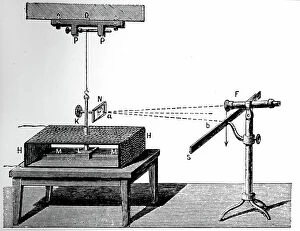Electromechanical Collection
Electromechanical marvels have shaped the world we live in today, revolutionizing communication and pushing the boundaries of human capability
All Professionally Made to Order for Quick Shipping
Electromechanical marvels have shaped the world we live in today, revolutionizing communication and pushing the boundaries of human capability. From the humble Teletype machine, with its intricate diagram showcasing its inner workings, to skilled operators meticulously repairing these mechanical wonders, it's a testament to our ingenuity. In the early days of telecommunication, teletype operators played a crucial role in transmitting messages across vast distances. Their nimble fingers danced across keyboards as they decoded and encoded information for swift transmission. These unsung heroes bridged gaps between people and nations. Delving deeper into history, we encounter Faraday's electric motor—a groundbreaking invention that laid the foundation for countless electromechanical devices. This ingenious creation harnessed electricity to produce motion, forever changing how we power machinery. Fast forward to 1930 when an ambitious video phone system emerged—an early glimpse into what would become commonplace decades later. The diagram illustrating this technological feat showcases our relentless pursuit of connecting with loved ones visually despite physical distance. The 1920s witnessed another leap forward with television systems taking shape. Intricate diagrams reveal how signals were transmitted through airwaves to bring moving images into homes worldwide—ushering in a new era of entertainment and information dissemination. As technology progressed further, so did our fascination with robotics. Enter robot insects—the embodiment of precision engineering mimicking nature's creations while serving various purposes from surveillance to exploration. These tiny marvels captivate us by their intricacy and potential applications yet unexplored. But electromechanical advancements didn't stop there; enter cyborgs—the fusion of human biology and machine technology—pushing boundaries beyond imagination. A cyborg running at full speed symbolizes humanity's quest for enhanced capabilities through integration with machines—a glimpse into a future where limitations are shattered.











